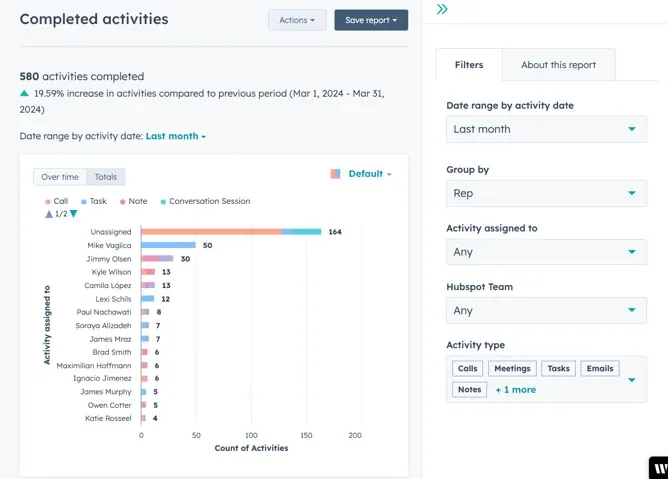When you rely on HubSpot reports for key insights, keeping them up to date is crucial. But ensuring they reflect the latest data isn’t always as easy as it looks. Are your reports refreshing frequently enough? Are they covering the right date ranges? And how do you spot errors before they mislead your team?
This post walks you through how to keep your HubSpot reports current by adjusting refresh rates, selecting accurate date ranges, and identifying data issues, so you're always working with the most reliable information.
Understanding refresh rates for HubSpot reports
One of the most important factors in keeping your HubSpot reports current is setting the correct refresh rates. A report that doesn't refresh frequently enough could leave you working with outdated data.
HubSpot's default settings refresh reports daily, but this can be adjusted depending on your needs. For example, sales teams often rely on daily sales reports to track performance, but if you’ve also set up a HubSpot quarterly report, it’s likely to need less frequent updates.
Make sure to align your refresh rates with the operational needs of your team. You can adjust these in the settings of your HubSpot dashboard, depending on whether you need daily, weekly, or even hourly refreshes.
How to set accurate date ranges
HubSpot allows you to set custom date ranges for reports, from “Today” or “Yesterday” to more expansive options like “Last 30 days” or “Last Quarter.”
For regular reporting needs, such as daily sales reports, you’ll want to make sure your data is updating in line with that. It’s always worth double checking any preset ranges that might accidentally skew your figures, rather than assuming it’s set up properly from the start. For instance, if you're reviewing a HubSpot quarterly report, confirm that your report covers the exact months in your fiscal quarter to avoid discrepancies.

How to know when your HubSpot report data is wrong
Sometimes, you may notice that your HubSpot report doesn’t look quite right. Perhaps a graph shows no data points for a particular month, or maybe certain sales figures don’t seem to add up. Common indicators that something's off with your data include:
- Missing data points: If graphs or tables show no data for long periods, it’s a sign that your report isn’t pulling in the correct time range or data.
- Unusual spikes or dips: Unexplained spikes or sudden dips in data could indicate incorrect parameters in your report.
- Delayed updates: If your reports are not refreshing as often as they should, your data might be out of sync with real-time operations.
If you notice any of these red flags, it’s essential to recheck your report settings and the sources of data to ensure everything is being pulled correctly. If you have more than one admin on your account, be mindful that other members of your team could make changes that impact your data accuracy, even if they’re accidental.
How to ensure your reports are always up to date
To make sure your HubSpot reports remain up to date, here are a few best practices:
- Set realistic refresh schedules: As mentioned, not all reports need to be refreshed daily. Consider the needs of your team and adjust your refresh settings accordingly. For a daily sales report, a daily refresh makes sense. But for monthly or quarterly reports, you may want to adjust this to weekly or monthly.
- Check your date ranges regularly: Within HubSpot, ensure that the date ranges you’re reporting on are still relevant. This is particularly important for reports covering seasonal sales trends or fiscal quarters. Regularly audit your reports to make sure they reflect the correct time frames.
- Regularly monitor for errors: Set aside time to regularly check your most critical reports for any errors in data. Keeping an eye out for missing data points or odd trends can save you from making decisions based on faulty information.
- Automate snapshot reports: Tools like Geckoboard can simplify the process of pulling together your sales data at regular intervals. This tool allows you to schedule daily, weekly, and monthly report snapshots that automatically pull data for periods like ‘Today’, ‘Yesterday’, ‘Last Week’, and ‘Last Month’. These shareable HubSpot reports are ideal for recurring reports like HubSpot quarterly reports and daily sales reports.
Keeping your HubSpot reports up to date
Keeping your HubSpot reports up to date is all about getting the basics right: consistent refresh schedules, accurate date ranges, and staying alert for any data inconsistencies. With these steps in place, you can trust that your reports will give you the information you need, when you need it.
And with tools like Geckoboard, automating report snapshots can make it even easier to keep track of your daily, weekly, or monthly insights, so your data is always fresh and ready to go.

